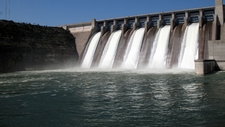Natural and Manmade Resources

TEKS Objective
The student is expected to distinguish between natural and manmade resources.
Essential Understanding
The student knows that the natural world includes Earth materials.
Science Background
Natural Resource: Wikipedia (website) – Every manmade product came from natural resources (materials found within the environment). Learn about different kinds of resources, their uses and protections.
Signature Lesson
Is It Natural or Transformed?: BioEd Online (Website) - The class will examine, sort, distinguish and discuss natural and processed materials. Teacher background included.
Is It Natural or Transformed?
BioEd Online, www.bioedonline.org
- Supporting Lessons
- Extensions
- Assessment Ideas
- Literature Connections
- Related
TEKS - Additional Resources
Supporting Lessons
Developing an Object or Tool: BioEd Online (Website) - Student teams work together to establish the process through which a natural resource (e.g., a tree) becomes a finished product (e.g., a wooden chair). Teacher background included.
Developing an Object or Tool
BioEd Online, www.bioedonline.org
Our Natural Resources: Minnesota Office of Environmental Assistance (PDF) – Natural resources are the raw materials supplies by nature. Students learn to distinguish natural resources, such as petroleum, from manmade items, such as plastic.
Our Natural Resources
Minnesota Office of Environmental Assistance, www.pca.state.mn.us
Materials and Manufacturing: Science NetLinks (website) - Students examine different materials, identify their properties, and determine their suitability for different purposes.
Materials and Manufacturing
Science NetLinks, www.sciencenetlinks.com
Recycled Materials: Science NetLinks (website) - This lesson builds on the previous one by having students identify materials that can be recycled and find possible uses for the recyclable materials.
Recycled Materials
Science NetLinks, www.sciencenetlinks.com
Elaboration Lessons and Extensions
Natural Resources on Earth: NASA (PDF) – Lesson introduces students to the natural resources that help us live and allow plants to grow.
Natural Resources on Earth
NASA, www.nasa.gov
Where Did that Pencil Come From? Econedlink.org (website) - Students determine what goods can be produced using natural resources, identify which natural resources contribute to the production of a particular item, and identify natural resources on a map.
Assessment Ideas
Once students have investigated the natural and manmade materials in the Signature Lesson (see above), allow them to select one example of each. Have students work with partners to come up with two new uses for each material chosen. Students should record their ideas in a science journal, using words and pictures to show two uses of the objects.
Literature Connections
Sustaining Our Natural Resources. Green, Jen (ISBN-10: 1410943283)
A Refreshing Look at Renewable Energy with Max Axiom, Super Scientist. Krohn, Katherine E. (ISBN-10: 1429639024)
The Way to Start a Day. Baylor, Byrd (ISBN: 0-689-71054-2)
The Earth's Resources: Renewable and Non-Renewable. Harman, Rebecca (ISBN-10: 1403470618)
Additional Resources
How to Make Paper: About.com (video) - Learn how to make decorative paper with flower petals and bits of recyclable paper.
TEKS Navigation
Grade 2
Need Assistance?
If you need help or have a question please use the links below to help resolve your problem.

Comments